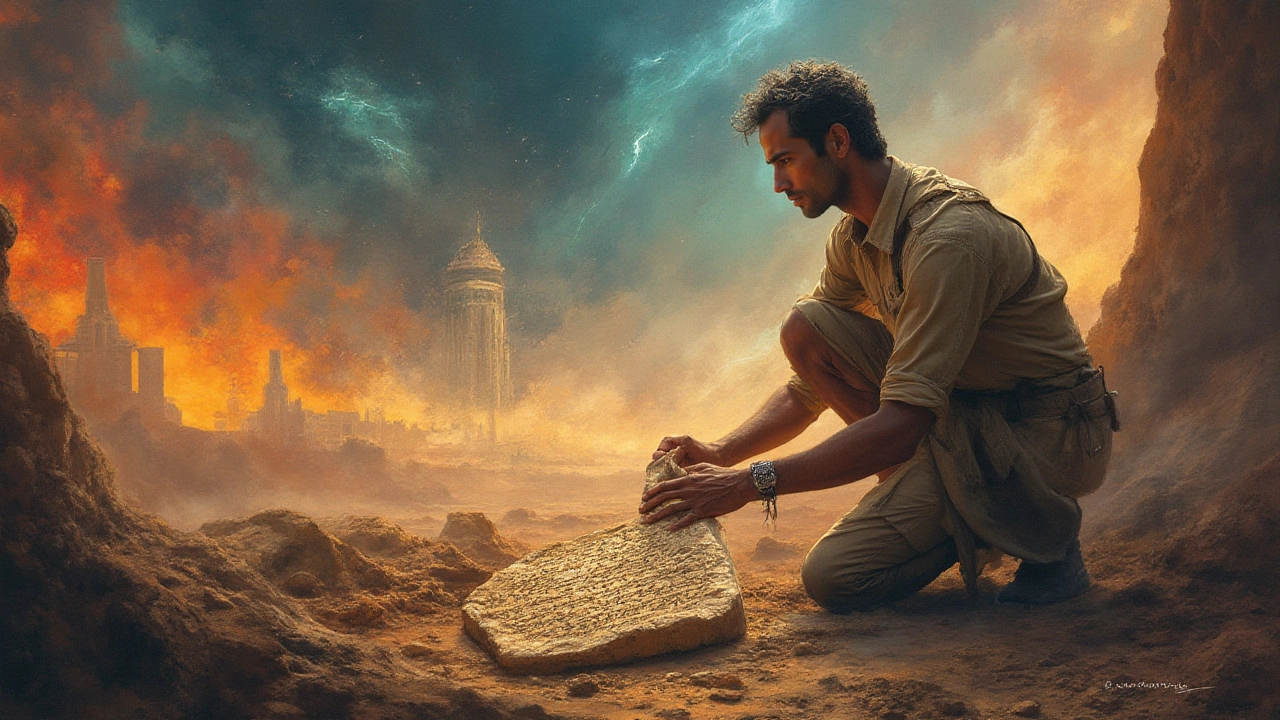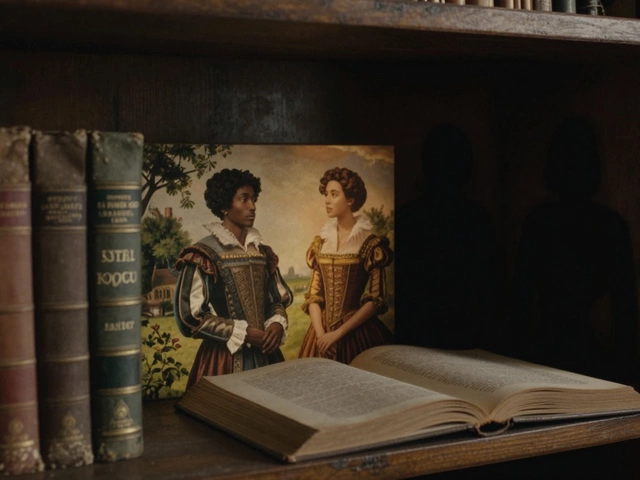
Picture this: you pick up an ancient book and try to figure out if what you’re reading is fact, fiction, or somewhere in between. That’s the Bible for a lot of people—sacred to some, but a puzzle for anyone who loves history. With over 2,000 years of intense debate, the question still keeps folks up at night: is the Bible historical fiction? It’s a loaded question, honestly. Clues from buried cities, weathered stones, and shredded scrolls have trickled in, but sorting legend from reality isn’t as easy as finding Max, my ever-hungry Lab, when I rattle his food bowl. Let’s pull back the curtain on what we actually know about the Bible’s place in history—and where things get murky.
What Makes a Text Historical Fiction?
Before taking sides, it helps to break down what counts as "historical fiction". If you’re picturing novels that throw real kings, battles, or wars into made-up tales, you’re on the right track. Historical fiction blends documented events with imaginative storytelling—a little history, a little creative license.
But the Bible is a weird beast. It covers centuries, jumps between kings and prophets, lists family trees, and tosses in miracles that don’t exactly show up in the daily news. Still, some parts look like they were written to record events, laws, or war stories. Others read like poetry or parables. We’re not talking one neat genre—think of it as a messy bookshelf: war chronicles squeezed next to family drama and moral fables.
Some biblical books hit hard with vivid, sometimes gritty details: political treaties, tribal feuds, dry census figures. Others crank up the supernatural. Ancient biographies, like those about Jesus or Moses, usually blend both. What really muddies things up is how these stories were passed on. Oral traditions kept them afloat for decades—sometimes centuries—before anyone wrote them down. Enough time for some pretty wild detail changes, right?
The line blurs most where you see historical nuggets buried in larger, grander stories. There are real cities and rulers—think Babylon, Assyria, Pharaoh Ramses. But there’s also talking donkeys, seas parting, and giants making cameos. If you’re expecting a tidy answer, you won’t get one here. Instead, reading the Bible means balancing on a tightrope between real history and stories spun for bigger ideas.
Archaeology and the Bible: Digging for the Truth
If you want concrete answers, archaeologists have been chasing Bible clues in the dust since the 1800s. They’ve found some wild stuff: entire cities named in the Bible, royal seals, broken pottery with ancient graffiti. The city of Jericho, for instance, really exists—layers of ruins go back thousands of years. There’s hard proof that a bunch of cities listed in biblical conquests actually stood in those places, right down to their ruins.
We’ve got Israel’s King Hezekiah mentioned on a stone inscription in Jerusalem. The Black Obelisk of Shalmaneser III, now in the British Museum, has a relief showing the biblical King Jehu kneeling to the Assyrian king—nearly straight out of the Bible’s playbook. Archaeologists also found fragments of the ancient city wall in Jerusalem that are tied to Nehemiah’s rebuilding project described in the Old Testament.
But it gets complicated. Some stories, like the Exodus—Moses leading Israelites out of Egypt—are missing the smoking gun. No Egyptian records talk about hundreds of thousands of slaves hitting the road. Archaeology around Jericho is all over the map: some evidence lines up with the biblical story, some digs say the timing’s off. Battles and kingdoms that sound huge sometimes leave tiny, or even zero, traces in the dirt.
Key discoveries have definitely backed up some historical elements in the Bible. But the more miraculous or epic the event, the less evidence turns up. Take the flood in Genesis. Every culture seems to have a flood story, and old layers of silt have been found in Mesopotamia. But nothing points to a global, Noah’s ark-style flood.
| Event/Character | Is there direct evidence? | What type? |
|---|---|---|
| King David | Partial | "House of David" mention in Tel Dan Stele (9th century BC) |
| Jericho walls falling | Debated | Evidence of city destruction, but dating is controversial |
| Moses and Exodus | No direct evidence | None found in Egyptian records |
| Pontius Pilate | Confirmed | Inscription (Pilate Stone) found in Caesarea |
| Hezekiah’s Tunnel | Confirmed | Tunnel in Jerusalem, Biblical inscription |
Also, let’s be real—some archaeologists come at these digs with a point to prove, hunting specifically for evidence that supports the Bible. That can add a dash of bias to what gets hyped up. Genuine finds should stand up to peer review, same as any science.

Biblical History vs. Ancient Myths and Folklore
Here’s the kicker: the Bible isn’t the only book mixing legend and history. Ancient Greece’s Homer wrote about Troy—with gods popping in and out. For centuries, archaeologists thought Troy was a tall tale, until a buried city turned up in Turkey. It didn’t match Homer exactly, but his epics had at least one toe in reality.
The Bible and other ancient Near Eastern texts swap ideas like neighbors borrowing sugar. For instance, the ancient Sumerian flood story, the Epic of Gilgamesh, came well before Genesis. Some parables echo Egyptian or Babylonian wisdom literature word-for-word. Legends of heroic births, wandering heroes, or miracle workers show up all across the ancient Mediterranean, not just in Israel.
So does that mean the Bible is just another myth? Not exactly. History isn’t a straight shot. Take King David: the Bible paints him as a giant-slayer and empire builder. Archaeologists, though, find evidence of some local chieftain in Jerusalem—maybe not a superstar, but definitely not a pure fairy tale.
The problem gets trickier with stories that happen way before real records begin. Noah, Abraham, and the early patriarchs—nothing outside the Bible confirms their tales. But by the time we hit written records (around 1000 BC), you get crossed wires—Babylon’s king Nebuchadnezzar and Assyrian rulers who do make history books.
When you compare miracle stories in the Bible and other ancient books, they fall into a similar bucket. Walking on water, healing the sick, even raising the dead—these stories pop up for dozens of would-be messiahs and holy men across the Roman empire. If you’re reading as a historian, the Bible follows the storytelling rules of its time: mixing mini-history lessons, grand speeches, and wow-worthy sky-miracle scenes for effect. But real life rarely reads that smoothly.
Ancient books always try to make their people or beliefs stand out. Often, the goal was to teach lessons or reinforce identity, not leave future historians an airtight record to fact-check. Modern writers do the same thing, telling stories to get a point across—even if not every detail happened exactly as described.
Reading the Bible Today: What Should We Believe?
Trying to nail down whether the Bible is "historical fiction" misses the richer, messier truth. Large parts of the Bible reflect *actual* historical settings, people, and events. Others are clearly more about shaping identity, teaching morals, or answering big "why are we here" questions.
Even scholars who don’t see the Bible as divinely inspired admit it’s a goldmine for understanding how people thought, lived, and fought in the ancient world. If we’re asking: Does the Bible record real events? Parts, yes. Are some stories legendary or reworked over decades to fit bigger ideas? Also yes.
Here are some smart tips for reading the Bible if you want to get to the bottom of what’s real and what’s story:
- Remember the Bible isn’t one book. It’s a library written by dozens of people over centuries.
- If a story matches records from outside cultures (Babylonian, Egyptian, Roman), it’s more likely historical.
- If a story has miraculous or supernatural elements, treat those carefully as you would with mythology from other cultures.
- Watch for details that don’t fit what’s known from archaeology, and be open to new digs overturning old ideas.
- Keep in mind why the story might have been told—what lesson, warning, or encouragement it offered.
When historians and archaeologists talk about the Bible’s "historical accuracy," they focus on finding outside evidence to back things up. Some big wins: documents proving the existence of Jerusalem, Babylon, and Rome; mentions of known kings and battles; and stuff like the Dead Sea Scrolls, which helped confirm how old some biblical books are.
No one’s found hard proof for every part. That’s normal. Ancient history gets fuzzy fast the further back you go. The fact that some Bible details do stand up to outside checks is impressive, even surprising to some skeptics. But thinking of the Bible as only a work of "historical fiction" misses the messy overlap in ancient times between what really happened and what people needed to believe.
Next time you see someone swearing every word is either stone-cold fact or complete fantasy, you’ll know it’s not so black-and-white. The Bible is a mix: a product of real places, mixed-up memories, legendary heroes, and big, impossible dreams. Its pages are a time machine—but that time is always shifting a little under our feet. Find the evidence where you can, question it when you should, and appreciate the stories for the world they tried to build. Just like any good book, it’s the mix that gives it power, not just which shelf you file it on.


